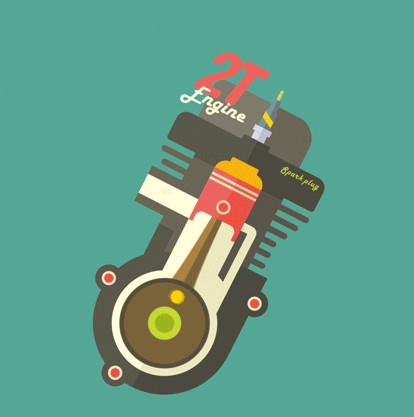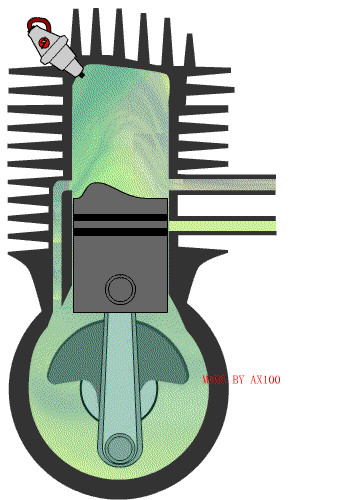What is the small-size gasoline engine?
Sometimes you may be somewhat confusing about the small gasoline engine. For example, a typical garden lawn mower engine may be small compared with the engine in your car.
However, the lawn mower engine seems little larger compare to the engine of garden brush cutter. Similarly, the engine in your car is quite large compared to the engine found in a grass trimmer, but it would be much smaller than the engine in a large cruise ship. As you can see, the meaning of “small engine” is relative depending on your point of view.
However, when we use the term small engine in this course, we’re referring to a gas-powered engine that produces less than 25 hp (horsepower). At this point, you may not be familiar with horsepower, but please remember the larger the engine, the more horsepower it produces

What is the two strokes?
The term two-stroke cycle means that the engine develops a power impulse every time the piston moves down.
The cylinder normally has two ports, or passages, one (called the intake port) to admit the air-fuel mixture, the other to allow burned gases to escape to the atmosphere. These ports are covered and uncovered by the piston as it moves up and down.
Piston moves upward! What happened in the enginee?
When the piston moves upward, the space it occupied in the lower part of the engine block becomes a vacuum. Air rushes in to fill the void, but before it can get in, it must pass through an atomizer called a carburetor, where it picks up fuel droplets. The air pushes open a spring metal flapper over an opening in the crankcase and with the fuel enters the crankcase.
Piston moves down! What happened in the engine?
When the piston moves down, it pushes both against the connecting rod and crankshaft, and the air-fuel mixture as well, partly compressing it. At a certain point, the piston uncovers the intake port. This port leads from the crankcase to the cylinder above the piston, permitting the compressed air-fuel mixture in the crankcase to flow into the cylinder.
Check the following interesting gif cartoon:

Post time: Jan-11-2023

